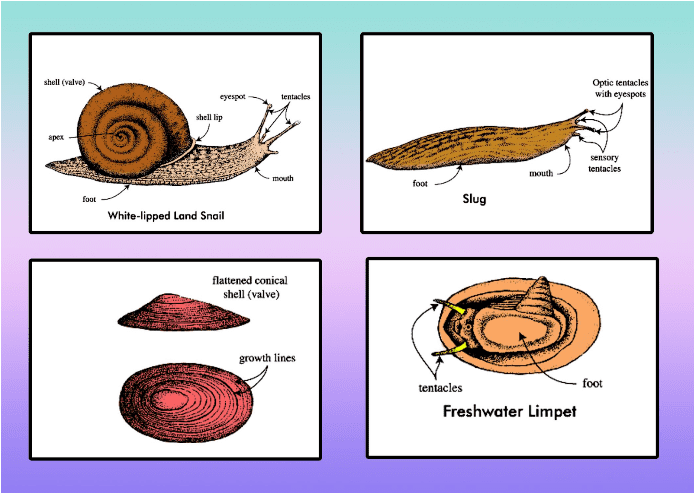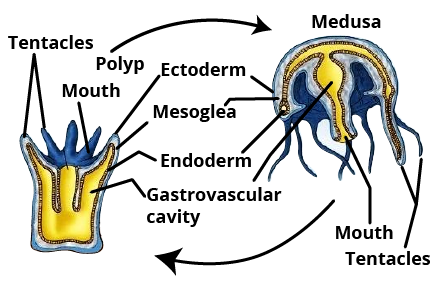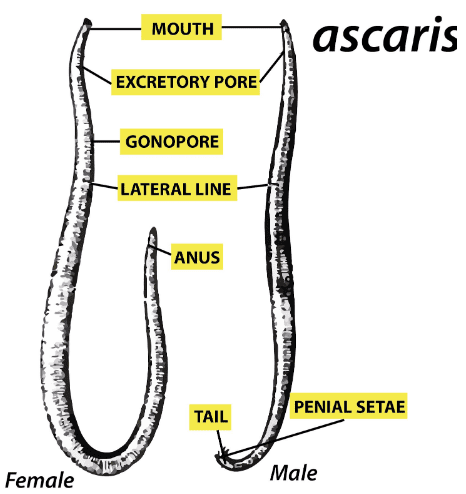Download CBSE Class 11 Biology Chapter 4 Important Questions Free PDF
FAQs on CBSE Important Questions for Class 11 Biology Chapter 4- Animal Kingdom
1. What are the most important topics within Chapter 4, Animal Kingdom, for the CBSE Class 11 Biology exam 2025-26?
For the 2025-26 exams, focus on the basis of classification (coelom, symmetry, segmentation) and the salient features of major phyla. Specifically, Phylum Arthropoda (largest phylum), Phylum Chordata, and the comparison between classes Chondrichthyes and Osteichthyes are high-weightage topics often appearing in 3 and 5-mark questions.
2. How can I score full marks on a question that asks to differentiate between Chordates and Non-chordates?
To score full marks, present the differences in a tabular format. Key points to include are:
- Notochord: Present in Chordates, absent in Non-chordates.
- Central Nervous System: Dorsal, hollow, and single in Chordates; ventral, solid, and double in Non-chordates.
- Pharynx: Perforated by gill slits in Chordates.
- Heart: Ventral in Chordates, dorsal (if present) in Non-chordates.
- Post-anal Tail: Present in Chordates, absent in Non-chordates.
3. What are some expected 3-mark questions from the phyla Platyhelminthes and Aschelminthes?
Important questions often focus on comparative features that highlight evolutionary advancements. For instance:
- List three distinguishing features of Phylum Platyhelminthes with examples.
- Explain the concept of a 'tube-within-a-tube' body plan with reference to Aschelminthes.
- Differentiate between Platyhelminthes and Aschelminthes based on their coelom, body symmetry, and level of organisation.
4. Why is the basis of classification considered a critical topic for exams, and not just the phyla descriptions?
The basis of classification is crucial because it forms the foundation for all comparative questions in the exam. Examiners use this topic to test your understanding of evolutionary relationships between different animal groups. Questions are designed to see if you can link features like the presence of a true coelom or bilateral symmetry to an animal's complexity and its position in the kingdom. Simply memorising phyla features without understanding these fundamentals leads to incomplete answers.
5. What is a common mistake students make when answering questions about Phylum Arthropoda?
A common mistake is only mentioning that it's the "largest phylum" and listing "jointed appendages." To score well, you must elaborate on the reasons for its success. Important points to include are the presence of a versatile chitinous exoskeleton, a segmented body (head, thorax, abdomen), and well-developed sensory organs like antennae and compound eyes. Forgetting to mention the diverse respiratory organs (gills, book gills, book lungs, tracheal system) is another frequent error.
6. What kind of Higher-Order Thinking Skills (HOTS) questions can be framed from the comparison of classes within Vertebrata?
HOTS questions often require you to apply knowledge. For example, a question might be, "All vertebrates are chordates, but all chordates are not vertebrates. Justify this statement with examples from the subphyla Urochordata and Cephalochordata." Another typical HOTS question could be to explain the evolutionary significance of the development of an amnion, which led to the success of Reptiles, Aves, and Mammals on land compared to Amphibians.
7. From an exam perspective, what are the three key distinguishing features between Class Aves and Class Mammalia?
While both are warm-blooded, the key distinguishing features for exams are:
- Integument: Aves have an exoskeleton of feathers, while Mammals are characterised by the presence of hair or fur.
- Reproduction: Aves are oviparous (lay eggs), whereas most Mammals are viviparous (give birth to live young) and possess mammary glands to nourish their young.
- Forelimbs: In Aves, the forelimbs are modified into wings for flight. In Mammals, forelimbs are adapted for various functions like walking, running, swimming, or grasping.
8. Are MCQs and very short answer questions from Animal Kingdom important for the final exam?
Yes, they are very important. This chapter is rich in terminology and specific examples, making it ideal for objective-type questions. Expect questions on the specific level of organisation (e.g., cellular, tissue), type of coelom (acoelomate, pseudocoelomate, coelomate), or a unique feature of a minor phylum (e.g., the water vascular system in Echinodermata or bioluminescence in Ctenophora). These questions test your precise knowledge and can significantly impact your overall score.




















